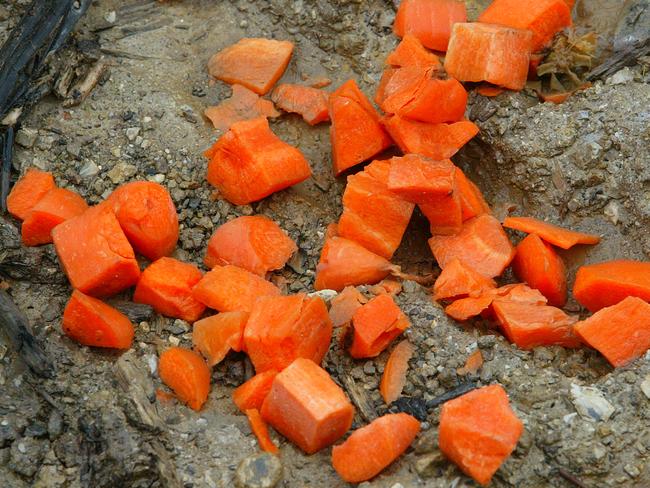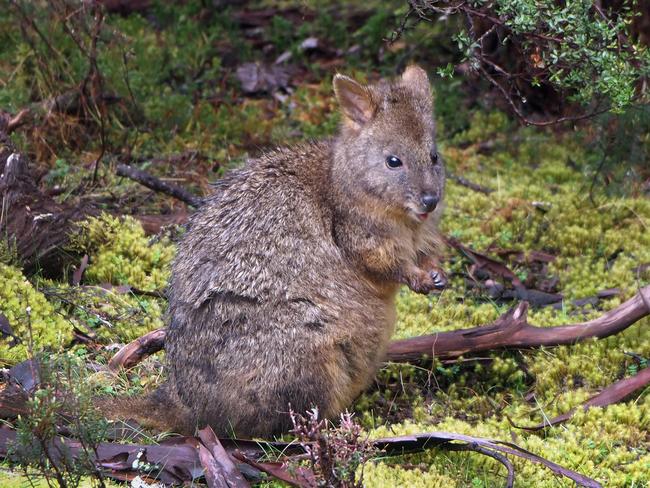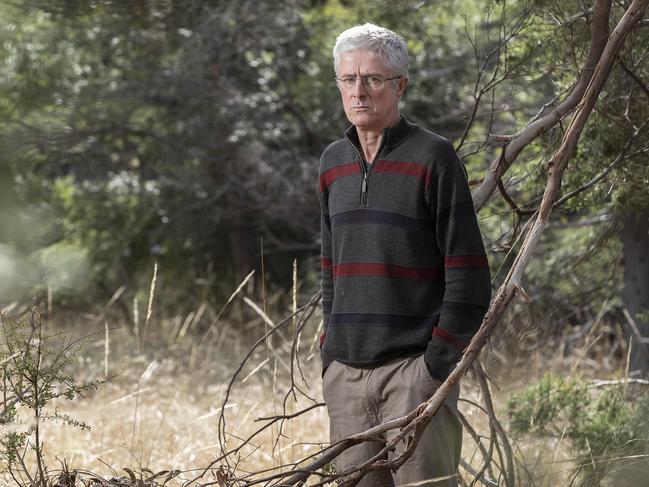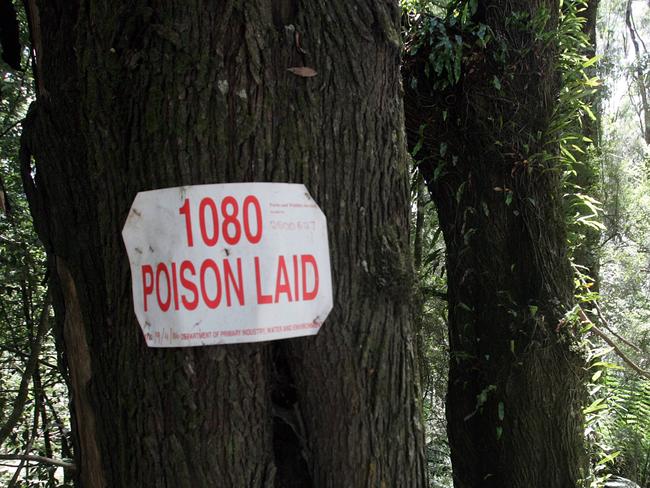Controversial 1080 still a popular option for Tasmanian farmers, new statistics reveal
The use of 1080 poison is still widespread in Tasmania, documents reveal, with renewed calls for the “simplistic and cruel” poison to be banned.
Tasmania
Don't miss out on the headlines from Tasmania. Followed categories will be added to My News.
- Activists take fish fight to the city streets
- ‘We will not be distracted’: Huon slams Twiggy’s salmon campaign
CALLS have reignited to reintroduce a blanket ban on 1080 poison, which continues to be laid in laced carrots on farms across Tasmania, particularly in the state’s North-East.
In data obtained by the Mercury under Right to Information laws, 28 crop protection permits were issued for the use of 1080 last year – chiefly to exterminate wallabies, pademelons and brushtail possums that graze on agriculture seedlings.
Use of the poison has remained stable over the past five years, the figures show, with public debate over its humaneness having lulled in recent years.
Meanwhile, the state government is showing no signs of reintroducing a ban.

Cruel or humane, but not going away
The 1080 poison – sodium fluroacetate – is imported into Tasmania by the Department of Primary Industries, Parks, Water and Environment and distributed to farmers who request crop protection permits.
The RTI documents show that in both 2019 and 2020, DPIPWE issued 28 permits for the use of 1080, dropping from 36 issued in 2018 and 37 in 2016, but an increase from 24 during 2017.
By far the most permits were issued to the North-East – 89 over the past five years compared to 58 in the North-West and four in the Central Highlands.
Only two 1080 permits were handed out in the South-East over that same period.
DPIPWE confirmed none of the 1080 permits over the past five years were issued to forestry organisations or golf clubs.
The now-dissolved forestry giant Gunns Ltd announced it would stop using the poison in 2010 after decades of using it to kill native animals from eating tree saplings – a management program that led to huge public backlash.
It was later also banned from agricultural use, but that ban was overturned in 2014.
The poison works by disrupting an animal’s energy production cycles, shutting down the central nervous system.
It causes animals to collapse or convulse, and can leave them dying slowly over hours.
DPIPWE said while there was debate over the humaneness of 1080 poison, it doesn’t build up in the environment and is preferred to strychnine, which causes “violent death with convulsions and pain”, often over two hours or more.

“Long, horrible and slow death”
Tasmanian Conservation Trust CEO Peter McGlone has spent years tracking the use of 1080 across the state, and said it is high time the state government stepped in to ban it completely.
“It’s a long, horrible and slow death,” he said.
“If you look at the figures that go back 15 years, the use of 1080 has stabilised at around 1 to 2kg a year, but that’s still unacceptable – it equates to the killing of tens of thousands of wallabies and possums.
“The death is prolonged, it’s slow and it’s painful. They can’t excuse it.”
Mr McGlone said it seemed that whenever farmers asked for a permit, “the government hands them out”.
“The farmers in the south have responded to public pressure.”
He called on the state government to finally ban the poison’s use, but said he doubted that would ever happen.
“Until people stop buying Tasmanian farming products, and questioning which farmers use 1080, I don’t think we’re going to see a change. I don’t think this government will regulate it until buyers on the mainland stop buying those products,” he said.

Greens environment and biodiversity spokeswoman Rosalie Woodruff described 1080 as a “simplistic and cruel fix”.
She said since the Liberal government reversed the ban in 2014, it had “failed to properly educate farmers about alternatives” or monitor how it was being used across the state.
“1080 is a cruel poison that causes prolonged suffering for native and domestic animals. It is entirely unnecessary for wildlife management, with humane alternatives for farmers to use,” she said.
“The ‘shoot or poison’ debate gets bandied around whenever 1080 use is questioned. It’s a false trade-off about how to manage numbers of native animals eating pasture when humane alternatives exist.”

Methods of management
The state government did not respond to questions on whether it would consider banning the poison.
Instead, a spokesperson told the Mercury the poison was one of a “suite of strategies” available to landholders to manage their properties.
The spokesperson said other options included fencing and shooting, with the “most appropriate tool” selected based on “specific site considerations”.
“The impact of browsing animals is assessed on all properties prior to a permit being granted,” they said.
The spokesperson also said DPIPWE was the only importer of 1080 in the state, with all poisoning operations performed under the supervision of wildlife management officers.
The Tasmanian Farmers and Graziers Association, the state’s chief advocacy body for the primary industries, declined to comment.



